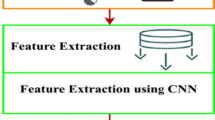Abstract
Trustworthy has been included as proof of the passed-in quality, which is safety, security, and privacy, and is not time limited. A real-time system operates according to a set of expected behaviors and conditions. Internet of Things (IoT) systems and applications are essential industrial investments expected to be of critical importance. Maintaining the reliability ofq7
such systems and networks is expensive, time-consuming and costly. A reliable IoT system considers the system operation’s security features and IoT reliability. These difficulties incorporate information breaks, phishing and spam crusades, and dispersed refusal of administration (DRoA) assaults, and malevolent exercises, for example, security breaks focusing on IoT gadgets. Deep learning (DL) strategies have been proposed to recognize pernicious traffic information, especially for malignant assaults against IoT gadgets. The proposed layered, profound learning strategy is stacked long short-term memory (SLSTM) coordinated with pre-prepared deep learning (DL) to gain proficiency with the attributes of dubious exercises inside and out and recognize them from ordinary traffic. Each pre-prepared DL model comprises the remaining blocks. We have utilized two huge datasets to evaluate the presentation of our discovery technique. Mixed IoT conditions guarantee that this approach can be applied to any IoT climate. Our proposed method, SLSTM, can recognize most IoT assaults by identifying harmless and malignant traffic information. The train results demonstrate that the proposed layered, profound learning technique can give a higher continuous location rate than existing grouping strategies.







Similar content being viewed by others
References
Tang H, Lu S, Qian G, Ding J, Liu Y, Wang Q. IoT-based signal enhancement and compression method for efficient motor bearing fault diagnosis. IEEE Sens J. 2021;21(2):1820–8. https://doi.org/10.1109/JSEN.2020.3017768.
Li J, et al. A remote monitoring and diagnosis method based on four-layer IoT frame perception. IEEE Access. 2019;7:144324–38. https://doi.org/10.1109/ACCESS.2019.2945076.
Li. C, Xue. M, Zhang. W and Hu. D (2022) IoT-based electrical safety monitoring and fault diagnosis for low-voltage distribution facilities. China International Conference on Electricity Distribution (CICED). pp. 1405–1409. doi: https://doi.org/10.1109/CICED56215.2022.9929192.
Al-Zeyadi. M et al. (2020) Deep learning towards intelligent vehicle fault diagnosis. 2020 International Joint Conference on Neural Networks (IJCNN). pp. 1–7. doi: https://doi.org/10.1109/IJCNN48605.2020.9206972.
Zhang S, He C, Miao Z. Intelligent fault diagnosis system based on vibration signal edge computing. Glob Reliab Progn Health Manag. 2020. https://doi.org/10.1109/PHM-Shanghai49105.2020.9280959.
Kovačević A, Putnik N, Tošković O. Factors related to cyber security behavior. IEEE Access. 2020;8:125140–8. https://doi.org/10.1109/ACCESS.2020.3007867.
Sun N, et al. Defining security requirements with the common criteria: applications, adoptions, and challenges. IEEE Access. 2022;10:44756–77. https://doi.org/10.1109/ACCESS.2022.3168716.
Mendsaikhan O, Hasegawa H, Yamaguchi Y, Shimada H. Quantifying the significance and relevance of cyber-security text through textual similarity and cyber-security knowledge graph. IEEE Access. 2020;8:177041–52. https://doi.org/10.1109/ACCESS.2020.3027321.
Yohanandhan RV, Elavarasan RM, Manoharan P, Mihet-Popa L. Cyber-physical power system (CPPS): a review on modeling, simulation, and analysis with cyber security applications. IEEE Access. 2020;8:151019–64. https://doi.org/10.1109/ACCESS.2020.3016826.
Lau P, Wang L, Liu Z, Wei W, Ten CW. A coalitional cyber-insurance design considering power system reliability and cyber vulnerability. IEEE Trans Power Syst. 2021;36(6):5512–24. https://doi.org/10.1109/TPWRS.2021.3078730.
Li G, Wu J, Deng C, Xu X, Shao X. Deep reinforcement learning-based online domain adaptation method for fault diagnosis of rotating machinery. IEEE/ASME Trans Mechatron. 2022;27(5):2796–805. https://doi.org/10.1109/TMECH.2021.3124415.
Mao W, Chen J, Liang X, Zhang X. A new online detection approach for rolling bearing incipient fault via self-adaptive deep feature matching. IEEE Trans Instrum Meas. 2020;69(2):443–56. https://doi.org/10.1109/TIM.2019.2903699.
Xu G, Liu M, Jiang Z, Shen W, Huang C. Online fault diagnosis method based on transfer convolutional neural networks. IEEE Trans Instrum Meas. 2020;69(2):509–20. https://doi.org/10.1109/TIM.2019.2902003.
Shi H, Mao W, Wang G, Liu K. Deep multi-task SVDD: a new robust online detection method of bearings early fault. Glob Reliab Progn Health Manag. 2021. https://doi.org/10.1109/PHM-Nanjing52125.2021.9612870.
Funding
No funding received for this research.
Author information
Authors and Affiliations
Corresponding author
Ethics declarations
Conflict of Interest
No conflict of interest.
Additional information
Publisher's Note
Springer Nature remains neutral with regard to jurisdictional claims in published maps and institutional affiliations.
This article is part of the topical collection “Advances in Computational Approaches for Image Processing, Wireless Networks, Cloud Applications and Network Security” guest edited by P. Raviraj, Maode Ma and Roopashree H R.
Rights and permissions
Springer Nature or its licensor (e.g. a society or other partner) holds exclusive rights to this article under a publishing agreement with the author(s) or other rightsholder(s); author self-archiving of the accepted manuscript version of this article is solely governed by the terms of such publishing agreement and applicable law.
About this article
Cite this article
Rajkumar, S., Sheeba, S.L., Sivakami, R. et al. An IoT-Based Deep Learning Approach for Online Fault Detection Against Cyber-Attacks. SN COMPUT. SCI. 4, 393 (2023). https://doi.org/10.1007/s42979-023-01808-y
Received:
Accepted:
Published:
DOI: https://doi.org/10.1007/s42979-023-01808-y




